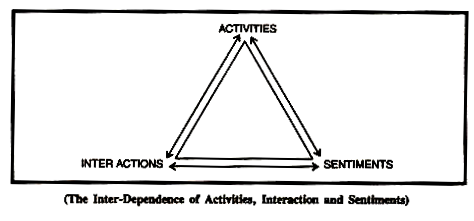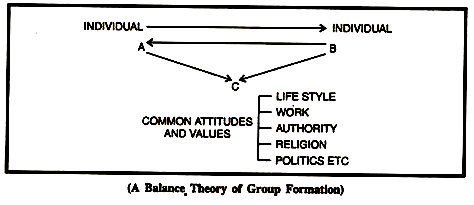Theories of Group
29/03/2020-
Propinquity Theory
The most basic theory explaining affiliation is propinquity. This interesting word simply means that individuals affiliate with one another because of spatial or geographical proximity. In an organization employees who work in the same area of the plant or office or managers with offices close to one another would more probably form into groups than would those who are not physically located together. There is some research evidence to support the propinquity theory and on the surface, it has a great deal of merit for explaining group formation. The drawback of this theory is that it is not analytical and does not begin to explain some of the complexities of group formation. Some more theoretical and practical reasons need to be explored.
-
Homan’s Theory
According to George C. Homans, “The more activities persons share, the more numerous will be there interactions and the stronger will be their shared activities and sentiments, and the more sentiments people have for one another, the more will be their shared activities and interactions.”
It is a very comprehensive theory and based on activities, interactions and Homan’s theory is based on sentiments. These three elements are directly related to each other. The members’ activities interactions and of a group share activities and interact with one another not just because of physical proximity but also to accomplish group goals.
The key element is interaction because of which they develop common sentiments for one another. These sentiments gradually get expressed through the formation of informal groups. If any disturbance is caused to any of the three-activities, interactions and sentiments, it is likely to disturb all the others.
Their relationships are shown in the following figure:

The Inter-Dependence of Activities, Interaction and Sentiments
-
Balance Theory
Another very comprehensive theory is a Balance Theory of group formation. This theory as proposed by Theodore Newcomb states that “Persons are attracted to one another on the basis of similar attitudes towards commonly relevant objects and goals. Once a relationship is formed, it strives to maintain a symmetrical balance between the attraction and the common attitudes. If an imbalance occurs, attempts are made to restore the balance. If the balance cannot be restored, the relationship dissolves.”
Thus, the balance theory is additive in nature in the sense, that it introduces the factor of balance to the propinquity and interaction factors. There must be a balance in the relationship between the group members for the group to be formed and for its survival. The following -figure shows the balance theory.
Individual (A) will interact and form a relationship/group with individual (B) because of common attitudes and values (C). Once this relationship is formed, the participants strive to maintain a symmetrical balance between the attraction and the common attitudes. If an imbalance occurs, an attempt is made to restore the balance. If the balance cannot be restored, the relationship dissolves.

-
Exchange Theory
This theory is based on reward-cost outcomes of interactions. To be attracted towards a group, a person thinks in terms of what he will get in exchange of interaction with group members. A minimum positive level (rewards greater than costs) of an outcome must exist in order for attraction or affiliation to take place. Rewards from interactions gratify needs while costs incur anxiety, frustrations, embarrassment or fatigue. Propinquity, interaction and common attitudes all have roles in the exchange theory.
[…] VIEW […]